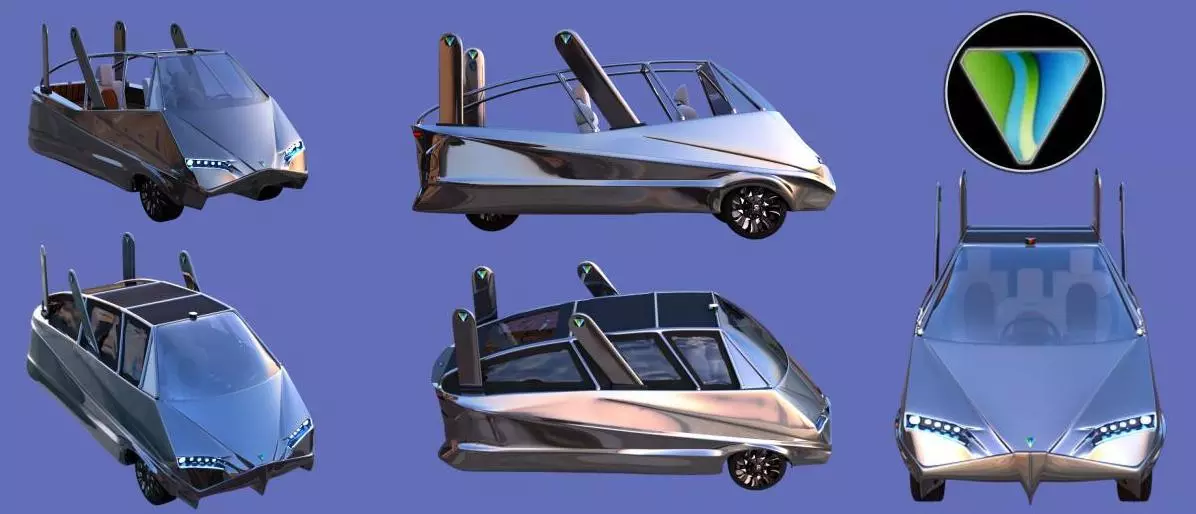Florida company Poseidon Amphibworks is raising money toward a prototype of its Trident LS-1. This electric, AWD three-wheeler will be capable of highway speeds on land, and it'll extend its range capabilities in the water using low-drag hydrofoils.
Amphibious vehicles are a niche product, to be sure. But for people living close to water, they offer an exceptionally convenient form of multi-mode transport – or even just a way to get out and have a quick fish without needing to hook up a trailer.
Poseidon is looking to bring these machines into the electric age, taking the well-worn path of road-registering the vehicle as a three-wheel motorcycle in order to keep costs and regulatory headaches to a minimum. Thus, the LS-1 (L for land, S for sea) runs a simple, non-tilting reverse trike chassis with electric motors in all three wheels.
These will pack enough punch to accelerate from 0-60 mph (0-96 km/h) in around five seconds, making it more than zippy enough for the street. It'll seat one driver, front and center, with a pair of seats in the back row. If you do want to tow it – say, pulling it behind your RV, you can hook it straight up without the need for a trailer.

You'll be able to drive it straight down a boat ramp and into the water, where in shallower areas it'll putt around as an electric boat using two electric thrusters mounted on retractable struts at the rear. Once the water's deep enough, the front hydrofoil, complete with a second pair of electric thrusters, will swing down, and the rear struts will push downward. At a certain speed, the hull will rise out of the water and a "flight control" system will take over as the bike hydrofoils along at speeds up to 35 mph (56 km/h).
This isn't just for show; battery-electric boats simply can't deliver much useful range pushing a large hull through the water. There's too much drag. Hydrofoils, however, experience much less drag, since so little of the vehicle's in the water. The LS-1 is the first electric amphibian we're aware of that attempts to make use of this technology.
Poseidon's location in Florida is no accident; the southern parts of Florida, along with the New Orleans area, project to be some of the areas most affected as the rate of sea level rise accelerates over the coming decades.

Refreshingly, the company is aiming to keep things as accessible as possible when it comes to price. As a convertible multi-mode amphibian with flight-controlled hydrofoiling, it still won't be cheap. But at a target cost of US$95,000, it'll be cheaper than a lot of boat options, as well as a ton more convenient for quick outings or trips across lakes or rivers. The hydrofoil system will make it an exceptionally smooth ride through choppy waters, and it'll double as a fun little electric getabout on the street. What's not to like?
Poseidon hasn't settled on a final look for the design, and indeed the company's still working to raise funds to get the LS-1 prototyped.
Source: Poseidon Amphibworks





